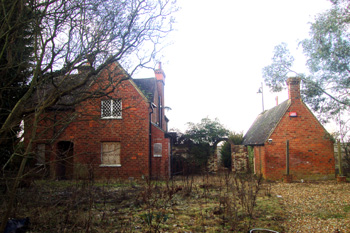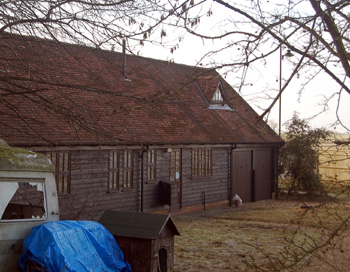1 Ridgmont Road Husborne Crawley

1 Ridgmont Road January 2011
Husborne Crawley has fifteen blocks of Bedford Estate cottages, mostly built in the 1850s and 1860s. This is a total of 61 separate homes. They can be found in Crow Lane, Horsepool Lane, Mill Road, Ridgmont Road, School Lane and Turnpike Road. Some were listed by the former Department of Environment, which gave a general background as follows: "The 7th Duke of Bedford recognised the advantages of housing agricultural labourers in comfortable dwellings. From the late 1840's onwards the emphasis in Bedford Estate cottage building was on the utilitarian rather
than the Picturesque. The cottages are not only remarkable for the high
quality of construction at such an early date, but also represent an
influential contribution to the development of working class housing which
culminated in the garden cities and early council housing. The Dukes of
Bedford built about 500 cottages in the locality between the 1840's and World
War One. The brickwork seems to be an early type of cavity walling".
1 Ridgmont Road is, architecturally, a classic Bedford Estate cottage though as a single dwelling it is considerably larger than others in the village. It may have been built by the estate for Farnell Mardlin, blacksmith and wheelwright in Husborne Crawley since at least 1839. If so it would have been because his work was valuable to the estate. The property was listed by the former Department of Environment in January 1986 as Grade II, of special interest.
The cottage was built in1850, in red brick laid a fashion known as rat-trap bond which is typical of the Bedford Estate cottages. It has 20th century tiled roofs.
Adjoining the cottage is the former smithy, now a separate private house. The Bedfordshire Historic Environment Record [HER] contains information on the county's historic buildings and landscapes and summaries of each entry can now be found online as part of the
Heritage Gateway website. The entry for the smithy [HER 14351]
describes it as a single storey, L-shaped building. It is clad in weatherboarding on three of the elevations and has a number of large windows with a mixture of flat and slightly arched heads. One of the side elevations is built of brick and appears to have an inbuilt furnace, which is visible from the outside and can be seen to link to the chimney stack. The roof is tiled and a projecting gable end is located on the outside angle.
The Rating and Valuation Act 1925 specified that every building and piece of land in the country was to be assessed to determine its rateable value. Husborne Crawley. Like most of the county, was assessed in 1927 and the valuer visiting the premises [DV1/C53/103] noted that the tenant wasGeorge Mardling who paid rent of £4/9/2 per quarter to the Duke of Bedford, the same level as before the Great War.
1 Ridgmont Road was described as comprising two living rooms, a kitchen, and five bedrooms. A washhouse, closet and coal barn stood outside. The smithy comprised the blacksmith's shop, a paint shop, a store shed and saw pit and a wheelwright's shop. The valuer commented: £Estate Buildings look like" and "Very good buildings indeed". The buildings stood on a site of 1.12 acres
Directories for Bedfordshire, which were not published annually but every few years. They show that the Mardling family were blacksmiths and wheelwrights, later coachbuilders in Husborne Crawley from at least 1839 until at least 1931. From 1839 (before 1 Ridgmont Road was built) to 1864 Farnell Mardlin was listed as blacksmith and wheelwright, later just wheelwright and as a coachbuilder from 1863. The next directory after 1864 is from 1869 and by then Henry Mardling was listed as coachbuilder, and continued to be listed through 1877, 1885, 1890, 1894 and 1898 to 1903. The next directory, 1906, lists George and John Mardling as coachbuilders, last listing them in the directory of 1920. The directories of 1924, 1928 and 1931 just list George Mardling as coachbuilder.
 The Old Smithy January 2011
The Old Smithy January 2011